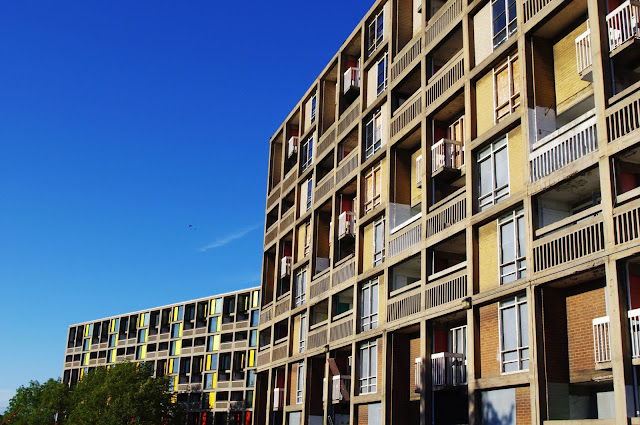Events in February 2017
I have a few more events lined up. Two talks for two new Modernist Societies for starters, in Liverpool and Sheffield, and part of a panel discussion at the Royal Academy in London, on everyday modernism.
Join John Grindrod author of Concretopia and publisher of Dirty Modern Scoundrel for his talk on Ten Buildings that Changed Postwar Britain.
How did blitzed, slum-ridden and crumbling 'austerity Britain' became, in a few short years, a space-age world of concrete, steel and glass? Discover the story of Britan's postwar rebuilding in this whistle-stop tour of ten extraordinary, brilliant or downright bizarre buildings that represent the story of this turbulent period of our history, from 1945 to 1979.
Travel from the days of prefabs and the birth of the Welfare State through to the concrete brutalism and ambitious plans that changed towns and cities up and down the country. John Grindrod is the author of Concretopia, a witty and revealing history of our postwar rebuilding, described by the Independent on Sunday as 'a new way of looking at modern Britain.'
How did blitzed, slum-ridden and crumbling 'austerity Britain' became, in a few short years, a space-age world of concrete, steel and glass? Discover the story of Britan's postwar rebuilding in this whistle-stop tour of ten extraordinary, brilliant or downright bizarre buildings that represent the story of this turbulent period of our history, from 1945 to 1979.
Travel from the days of prefabs and the birth of the Welfare State through to the concrete brutalism and ambitious plans that changed towns and cities up and down the country. John Grindrod is the author of Concretopia, a witty and revealing history of our postwar rebuilding, described by the Independent on Sunday as 'a new way of looking at modern Britain.'
I also have a completely different event lined up for the Royal Academy:
Royal Academy, London
Monday 20 February 2017, 6.30 – 8pm
Geological Society, Piccadilly, W1.
Panel discussion, Everyday Modernism, with me, Ben Highmore, Joe Kerr and Penny Sparke.You can book tickets here.
This does not mean abandoning a critical approach to production at the other end of the scale. Instead we should ask whether, in making Modernism available for domestic consumption, these pioneers were forced to compromise with the world that it was meant to change – or did they smuggle radical ideas into everyday life, transforming it more effectively than any bombastic building or high-minded polemic ever could?











Comments
Post a Comment